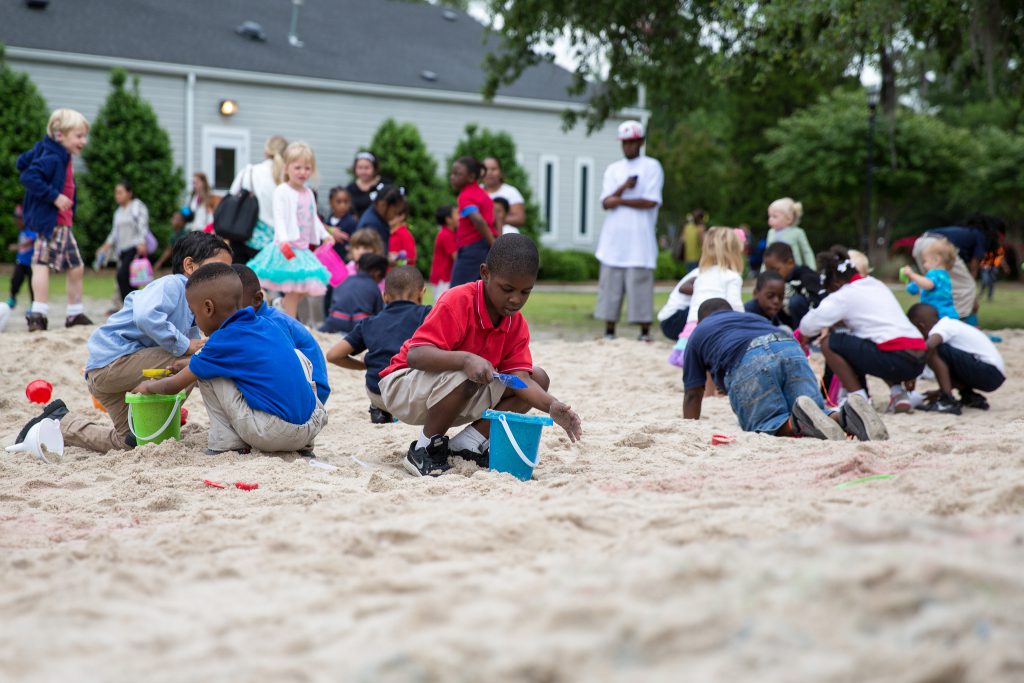We’re now mid-way through the first year of the AAAS Community Engagement Fellows Program (CEFP), funded by the Alfred P. Sloan Foundation. The first cohort of Fellows is made up of 17 scientific community managers working with a diverse range of scientific communities. As they continue to develop their community engagement skills and apply some of the ideas and strategies from their training, the Fellows will report back on the Trellis blog, sharing their challenges, discoveries, and insights. Today, in part 2 of a three part series of reflections on the Science of Team Science 2017 conference, Fellow Jennifer Davison shares tips on how to train a scientific team.
Posted by Jennifer Davison, Program Manager at Urban@UW
Although I work as a community manager, I am trained as an ecologist. In graduate school, along with studying climate change and its impacts on plant and animal communities, I learned skills like experimental design, geographic information systems, and statistical methodologies: relatively transferrable skills that are important for being an effective scientist. I was also taught that what’s most valued in academic research are peer-reviewed papers, preferably where you are the first or only author, in the highest-impact journal in which you can get your work accepted. By contrast, I did not receive much instruction or mentorship around skills like teamwork, conflict management, facilitation, or cultural competency.
And yet, it turns out that these kinds of skills are what can make or break collaborative research—a type of scholarship that is becoming more and more important as the challenges we face continue to complexify. (that’s a new word I just made up.) So, it’s not surprising that at the Science of Team Science annual conference there was a lot of discussion about how to train scholars to collaborate.

Why train scientists to work together?
As I realized after graduate school, different skills are needed to do collaborative research than to do your own science thing. But as I mentioned in my previous post, not only is collaboration harder than solo research, we also rarely receive training in the ways of thinking, speaking and acting that can help collaborations succeed. However, as both professors Maritza Salazar and Deborah DiazGranados presented at the conference, when teams plan and prepare to work together, there can be a substantial increase in productivity and outcomes. It’s also often a lot more enjoyable!
What can we do to prepare scientists to collaborate?
There are quite a few ways to set up teams for success. DiazGranados suggested that interventions for teams of scientists could be made during building of the team, training, debriefing of the project, and in leadership itself. These interventions should be tailored to the needs of both the individual and the unique blend of experience, motivation, values, personality traits, and even time management preferences within a team.
Building a team
As keynote presenter Jakob Zinsstag, eminent scientist in transdisciplinary research circles, explained, trust is critical for team success. Thus team-building could include the following strategies:
– Team members should be encouraged and supported to engage with each other as early as possible.
– Teams should co-create clear, specific goals, language, roles, and expectations for the partnership. An awesome example of a method to achieve this is the work being done by the Toolbox Dialogue Project.
– Intensive, retreat-like atmospheres are often leveraged for initial team-building work (the topic of my next post!).
– Transparency in everything from budget to meeting agendas will help build a foundation of communication and shared understanding.
– The team should expect to meet frequently and regularly—it should be built into calendars from the start.
Training a team
Mutual trust and a shared sense of purpose will go a long way towards mitigating individual mistakes and inconsistency in contributions, but it will only take a team so far. Training in both the background and the practical skills of collaborative research has been shown to increase productivity by at least 20%, according to Salazar. Some tips for training included the following:
– Explore and discuss the evidence on how/why people see things from different lenses. Gaetano Lotrecchiano suggested that comparing disciplinary models, language, and norms will help to expose these challenges for the team, and will prompt them to devise strategies to address them.
– Delve into the literature on team science! Researchers value data, and the work being done on this topic is very useful.
– Do not ignore power dynamics, and do provide training for teams to diagnose and address challenges that come from imbalances in power between disciplines, roles, and identity types such as gender and race. Suzanne Bell presented some great work on this front.
– Interpersonal communication principles, such as reducing or explaining jargon, attentive listening, stepping up/stepping back, and other best practices can help team members as they develop agreements and acknowledge differences in language and norms.
– Although teams do benefit from facilitation and, sometimes, conflict mediation and negotiation training, providing this capacity in the form of a trusted community manager or other professional might make more sense than training team members in these more complicated skills.
A note on leadership
To paraphrase an inspirational poster I once saw, a team is only as great as its least awesomely prepared and excited team member. At SciTS, leadership was discussed as quite important for team productivity, and Wooten shared some work that draws on the extensive catalogue of private-sector leadership tools to help in the science context. This work is still emerging, but I am very curious about its transferability!

The research on what enables teams to collaborate effectively is expanding rapidly, and training to facilitate this is following. I’ve found some great tools and ideas for collaboration research in the Team Science Toolkit, the Implementation and Integration Insights blog, among many other sources. As community managers for such teams, we can take steps to support both teambuilding and training, in order to see more impactful collaborations. What have you found that works?
This is the second post in a three part series, the first of which is found here. You can also catch up on all of our 2017 Science of Team Science coverage or browse all of the CEFP Fellows’ posts.